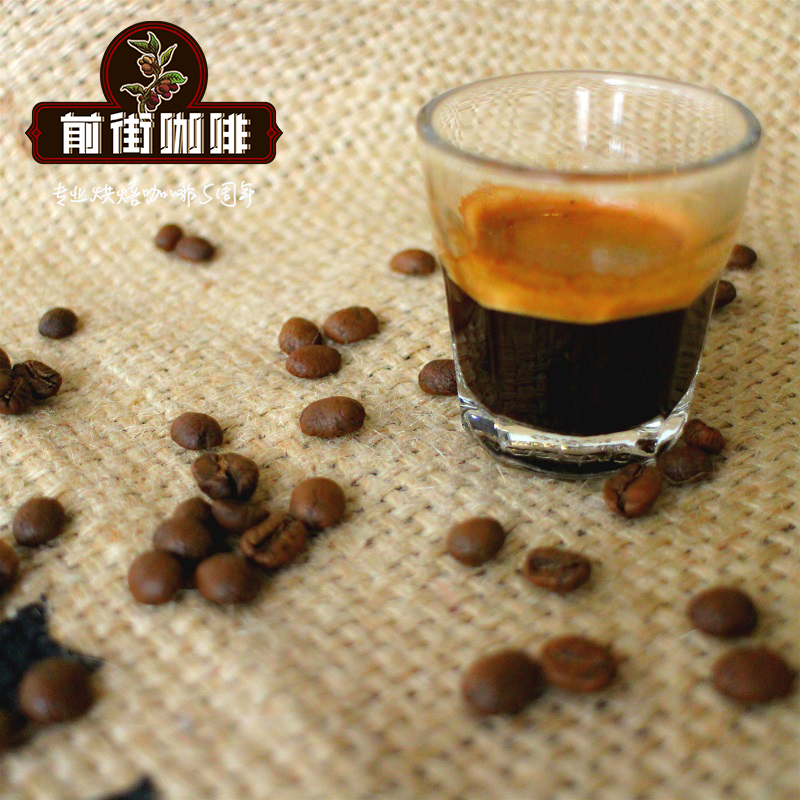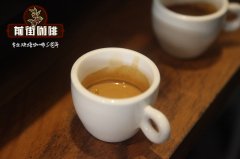The blending principle of Italian Coffee (Espresso) course on how to use Italian mocha coffee maker

Professional coffee knowledge exchange more coffee bean information please follow the coffee workshop (Wechat official account cafe_style)
To explore the relationship between coffee machine pressure, coffee grinding thickness, temperature and time on the quality of coffee drinks.
Expresso
"espresso" is the Italian equivalent of "express" . , a coffee drink made immediately after guests click and finished quickly, is a beverage that guests must wait for.
two
Pressure pot-Italian coffee maker
Pressure coffee brewing equipment invented in the early days of 1900
The pressure can reach 1.5 atmospheric pressure.
The temperature is much higher than 100C
In addition to extracting coffee soluble substances, also extruded a large number of insoluble substances under high pressure and mixed them into the liquid.
The severe bitterness and irritation of
three
Extraction temperature and taste of coffee
Strength degree
Slightly stronger
Moderate
Medium and weak
Weak
Acidity astringent taste
Viscosity irritation
four
Espresso machine construction diagram
Supercharger (pump)
Heat exchanger
Extraction tank
five
Espresso Coffee definition
is filled with about half full coffee liquid in a 50 cm thick magnetic cup (25Mel 35 c. C.)
is made under the following conditions:
The amount of coffee powder used by is 6.5 ±1.5g (5Mel 8g). The water temperature extracted by is 90 ±5C (85Mel 95 °C).
The pressure of extraction is 9 ±2 atmospheric pressure (7 Murray 11 atm)
The extraction time of is 30 ±5 seconds (25 Murray 35 seconds)
six
coffee powder quantity
Particle size distribution of coffee powder
pressed powder (cake) pore
pressed powder shape
water quality
temperature Water temperature and Steam temperature
pressure
extraction time
pre-wetting pressed powder cake moistening
Machine Clean 7
Espresso coffee extraction factor
Coffee powder quantity
coffee contains different chemical components with different solubility.
With the progress of extraction time, different components dissolve out one by one.
The first component of to be dissolved and extracted is meta-acid.
The last soluble component of is bitter.
Astringent
The proper extraction amount of is that when the ingredients in coffee granules are extracted by 18Mel-22%, the composition that most people like can be achieved.
The concentration of coffee is 1.15% and 1.35%, which is considered by most people to be moderate.
eight
Coffee particle size and coffee taste
nine
bean grinder type Rollercutters
Conicalcutters Flatcutters
Particle size distribution of coffee powder microscopic image of coffee particle
ten
Flat cutters
raw bean quality maturity
hardness
defective bean
baking quality baking degree uniformity
moisture content bean grinder
Factors affecting particle size distribution
eleven
twelve
The function of packing
reallocates the spatial configuration of particles changes porosity
Pressed powder (cake) pore
particle size and stack
particle size and porosity
Pressed powder shape
's traditional dual-dose powder cup is cylindrical, deep 12mm wide 60mm, depth / width ratio is
0.2 (= 12Universe 60)
if the depth-to-width ratio of the powder cup is less than 0.2 (shallow cup), the particles need to be fine to delay.
For a long extraction time, if it is greater than 0.2 (deep cup), the extraction pressure needs to be increased.
thirteen
fourteen
affects functional sensation
other odors of tap water treated by chlorination
hard water
calcium ion deposition
Water quality
Extraction temperature and taste of coffee
Strength degree
Slightly stronger
Moderate
Medium and weak
Weak
Acidity astringent taste
Viscosity irritation
fifteen
sixteen
Temperature
water temperature
powder cup handle temperature
steam temperature
in order to maintain the constant temperature of the machine, in the standby state, a small amount of steam will be sent to the cooking head to keep warm. The temperature of levying gas is so high that it usually overheats. Therefore, before putting on the handle, it is necessary to put water to cool down, and immediately after the handle is held, it should be washed to prevent steam filling, resulting in "scalding".
Pressure in the cooking process, the pressure is variable!
When dry powder, the pressure is small, under the impulse of water flow, the particles are redistributed, and the fine particles move to the bottom of the powder cup. The flow rate is faster.
After infiltration, the powder becomes colloid, the volume expands, the resistance increases, the pressure increases, and the flow velocity slows down.
After the extract leaves the powder cup, the volume decreases, the resistance decreases, and the flow rate increases.
seventeen
Crema formation
coffee oil components under high pressure, emulsification occurs, wrapped in air particles, shape
It's a bubble.
eighteen
The part of the tiger spot or leopard print is a broken cell wall.
nineteen
Correct extraction
twenty
The influence factor of on flow rate powder quantity
porosity
cell contents
Extraction time
twenty-one
Pre-wetting pressed powder cake moistening
Pre-infulsion first feed a small amount of water and stop for a few seconds to make the coffee powder moist and swollen, and then boil.
Start cooking.
provides a homogenized surface and provides homogenized extraction.
Machine cleanliness
coffee dirt should not be removed completely to reduce the smell of the new machine.
Important Notice :
前街咖啡 FrontStreet Coffee has moved to new addredd:
FrontStreet Coffee Address: 315,Donghua East Road,GuangZhou
Tel:020 38364473
- Prev

Usage of Italian mocha coffee maker which is stronger than the Italian coffee maker or the mocha pot?
Professional coffee knowledge exchange more coffee bean information please pay attention to the coffee workshop (Wechat official account cafe_style) espresso machine and espresso pot coffee which is stronger or both strong, then what is the difference between them? Espresso maker-MOKA, some people call it a handmade espresso, but it doesn't seem to be right because it's brewed.
- Next

Italian espresso how many milliliters of espresso common extraction problems and correct practices
Professional coffee knowledge exchange more coffee bean information please pay attention to the coffee workshop (Wechat official account cafe_style) espresso extraction problem, the following is a more common example: overextraction (Over-extraction) must first understand the concept of extraction rate, according to
Related
- What is the Philharmonic pressure? How to use Philharmonic pressure to make delicious coffee
- Why does a hand grinder have more fine powder than an electric grinder?
- In addition to the hot mom, what is the difference between the versions of EK43 | ditting and Mahdi ek43?
- What kind of equipment do you need to make coffee by hand? Introduction to novice starter cooking equipment tools
- Espresso needs to be ground how thick and thin scale entry Italian Coffee Machine Bean Grinder investigation and Grinding course
- How much does it cost to open a small private cafe? How much does it cost to learn coffee? How to operate it?
- The difference between the flavor characteristics of hand-brewed coffee and coffee maker is hand-brewed coffee really better than coffee maker? Can I use a coffee machine to make coffee beans by hand?
- The difference between 01 and 02 of hario v60 filter cup what is the difference between 01 and 02 filter cup opening and cooking flavor
- What's the difference between the smart cup and the French kettle? Which is better, the French kettle or the Smart Cup?
- What's the difference between a smart cup and a V60 filter cup? The difference between the taste of smart cup and hand-brewed coffee

